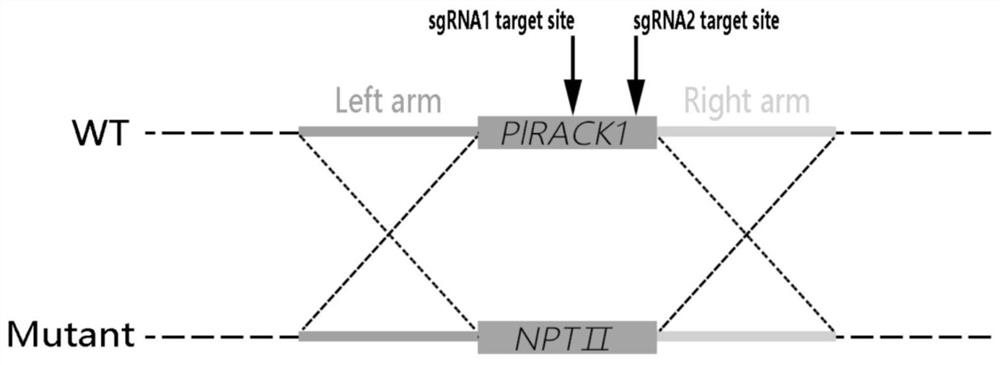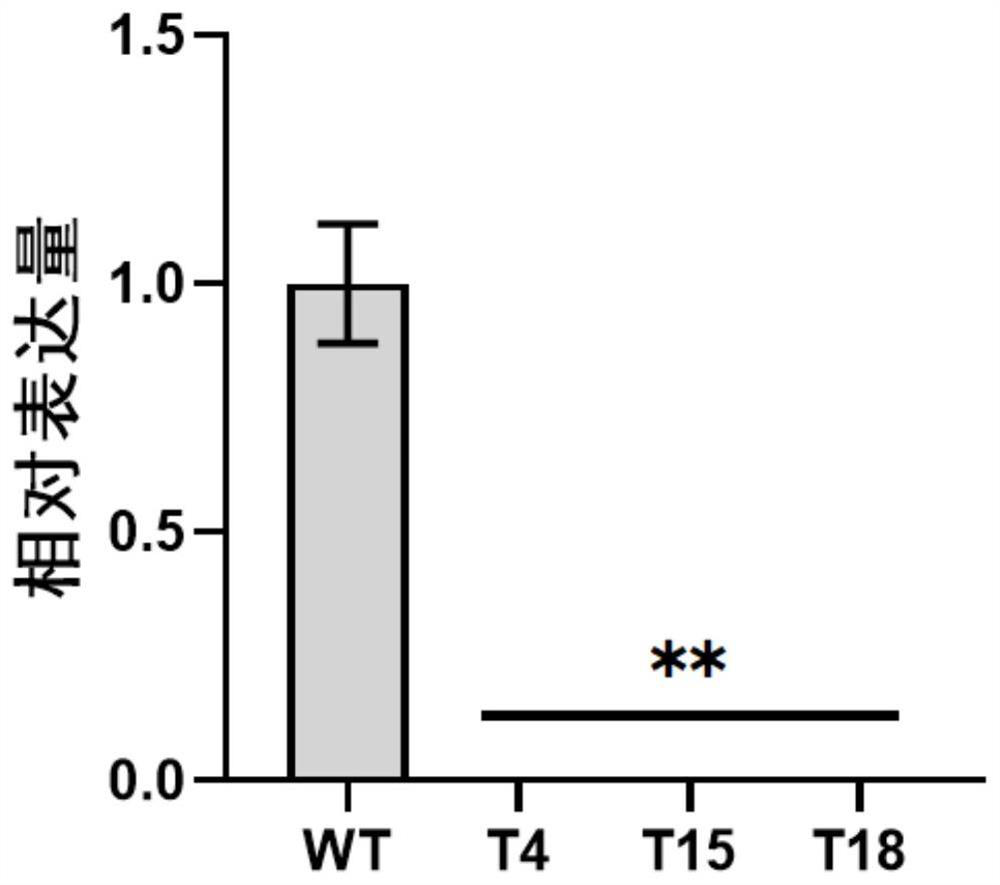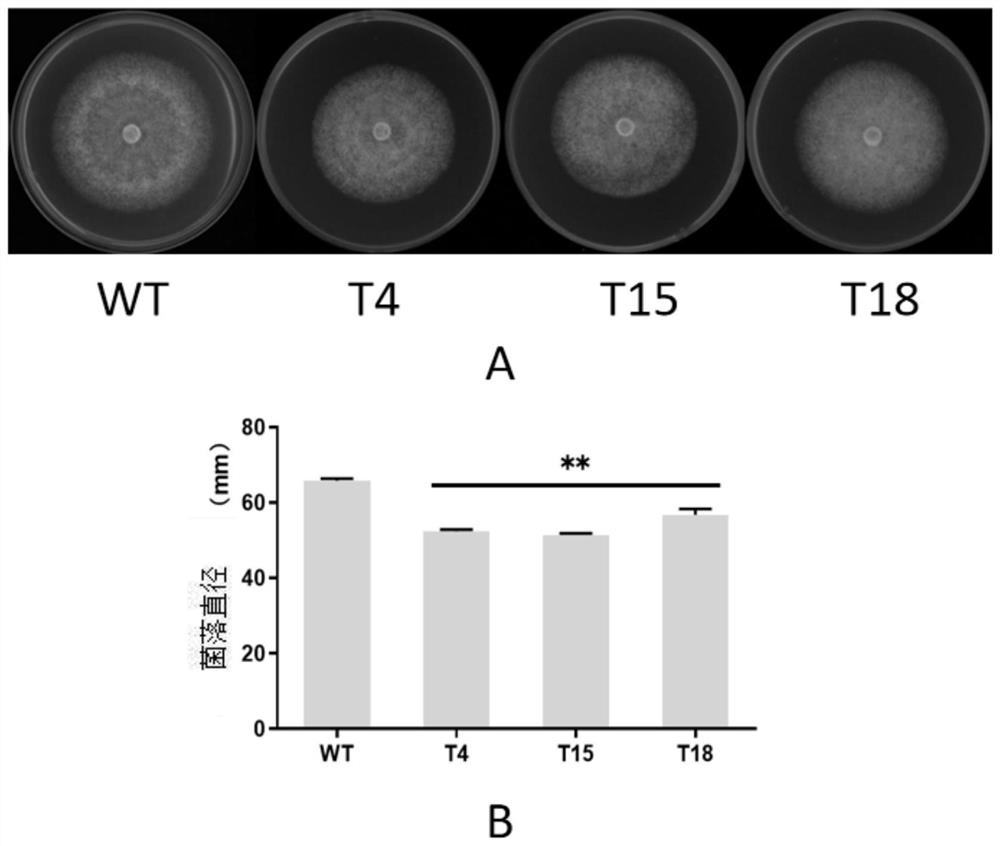Application of gene PlRACK1 in regulation and control of growth, oxidation resistance and pathogenicity of peronophythora litchii
A technology of downy mildew and pathogenicity of litchi, which is applied in the field of plant genetic engineering, can solve the problems of harm and no disease-resistant litchi planting varieties have been found, and achieve the goal of reducing tolerance, reducing pathogenicity, and slowing down the growth rate. Effect
- Summary
- Abstract
- Description
- Claims
- Application Information
AI Technical Summary
Problems solved by technology
Method used
Image
Examples
Embodiment 1
[0030] experiment material
[0031] Test strains, plants and vectors
[0032] The test strain is Phytophthora litchii wild type strain (Peronophythora litchii, Wild Type, referred to as WT) is a conventional Phytophthora, which can be obtained through commercial channels or natural isolation, Escherichia coli (Eschrichia coli) strain DH5α, can be obtained through commercial channels The inoculated plant material for the test was the young leaves of Litchi (Feizixiao) (collected from the horticultural practice orchard of South China Agricultural University); the oomycete knockout and transformation vectors pYF2-PsNLS-hSpCas9, pYF2.3G-Ribo-sgRNA (already in the literature " Yufeng,Fang,Linkai,et al.Efficient Genome Editing in theOomycetePhytophthora sojaeUsing CRISPR / Cas9[J].Current Protocols in Microbiology,2017”), pBSSK (disclosed in the document “A CRISPR / Cas9-mediated in situcomplementation method for Phytophthora sojae” mutants[J].Molecular PlantPathology, 2021, 22(3)", th...
Embodiment 2
[0095] Preparation of Phytophthora litchi protoplasts and PEG-mediated transformation
[0096] Phytophthora litchi wild-type strain WT was activated on nutrient pea solid plate medium. The mycelium block was taken into a conical flask, and 50 mL of NPB liquid medium was added for cultivation. Three flasks were co-cultured and cultured in the dark at 25°C for 3 d, with shaking every 12 h. Filter with gauze, collect mycelia, squeeze gently with tweezers and add them to the enzymolysis solution (composition of enzymolysis solution: weigh 0.15g of lysing enzyme (Lysing Enzymes, SIGMA) and 0.06g of cellulase (Cellulase, SIGMA) ) in a sterilized beaker, add 10mL of 0.8mol·L to the ultra-clean bench -1 Mannitol, 8mL sterile ddH 2 O, 800μL 0.5mol·L -1 KCl, 800μL 0.5mol·L -1 MES-KOH and 400μL of 0.5mol·L -1 CaCl 2 , after fully dissolving, transfer to 50mL centrifuge tube of 50mL centrifuge tube (for use), mix gently, enzymolysis for 40-45min at 25°C, 40rpm. After the mycelium w...
Embodiment 3
[0099] Validation and Determination
[0100] (1) Validation of fluorescence quantitative analysis of PlRACK1 knockout transformants
[0101] The hyphae of Phytophthora litchi wild-type WT and transformants were extracted with the All-In-One DNA / RNA Mini-Preps Kit from BBI Company, and the genome was performed with the FastKing cDNA first-strand synthesis kit from Tiangen. DNA removal and reverse transcription cDNA synthesis, the quantitative primers PlActin-F and PlActin-R were designed with the PlActin gene as the internal reference gene, and the quantitative primers PlRACK1-qPCR-F and PlRACK1-qPCR-R were designed with the CDS sequence of the PlRACK1 gene as the target gene. SYBR Premix Ex Taq TM kit (TAKARA) was used for real-time quantitative PCR, and the expression of PlRACK1 gene was analyzed to verify whether the PlRACK1 gene was successfully knocked out.
[0102] The wild-type WT and transformants of Phytophthora lychee were extracted by CTAB method. Using the genomic ...
PUM
 Login to View More
Login to View More Abstract
Description
Claims
Application Information
 Login to View More
Login to View More - R&D
- Intellectual Property
- Life Sciences
- Materials
- Tech Scout
- Unparalleled Data Quality
- Higher Quality Content
- 60% Fewer Hallucinations
Browse by: Latest US Patents, China's latest patents, Technical Efficacy Thesaurus, Application Domain, Technology Topic, Popular Technical Reports.
© 2025 PatSnap. All rights reserved.Legal|Privacy policy|Modern Slavery Act Transparency Statement|Sitemap|About US| Contact US: help@patsnap.com



